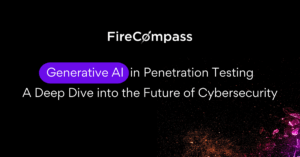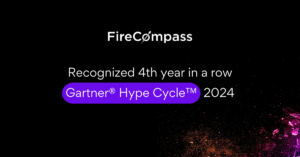What is Continuous Automated
Penetration Testing?
Table of Contents
- Definition of Continuous Automated Penetration Testing (CAPT)
- Key Components of CAPT
- Benefits of CAPT
- CAPT vs. Traditional Penetration Testing
- Implementing CAPT in Your Organization
- Common Challenges in CAPT
- Future of Continuous Automated Penetration Testing
- Conclusion
1. Definition of Continuous Automated Penetration Testing
Continuous Automated Penetration Testing (CAPT) is a modern approach to identifying security weaknesses in systems and applications. Unlike traditional methods that occur at set intervals, CAPT operates on a continuous basis, automating the process of testing for vulnerabilities. This allows organizations to detect and address security gaps in real time, reducing the window of exposure to potential attacks. CAPT is a crucial element in a comprehensive security strategy, ensuring that defenses are always tested against the latest threats.
2. Key Components of Continuous Automated Penetration Testing
Automation in Penetration Testing
CAPT leverages automation to perform penetration tests without constant human intervention. This involves using specialized tools that simulate attacks on systems, applications, and networks. These tools are designed to mimic the actions of real-world attackers, allowing for a thorough examination of security measures. Automation speeds up the testing process, enabling organizations to conduct frequent assessments without the need for extensive manual efforts.
Continuous Monitoring
A core aspect of CAPT is continuous monitoring. This means that the security posture of an organization is assessed on an ongoing basis. Continuous monitoring involves tracking changes in the environment, such as new vulnerabilities or configuration changes, and immediately testing for their impact. This proactive approach helps organizations stay ahead of potential threats, ensuring that security measures are always up to date.
Vulnerability Management
CAPT not only identifies vulnerabilities but also helps manage them effectively. After a penetration test, the findings are analyzed, and actionable insights are provided. Organizations can prioritize the vulnerabilities based on severity and impact, allowing them to allocate resources efficiently. This streamlined approach to vulnerability management ensures that critical risks are addressed promptly.
3. Benefits of Continuous Automated Penetration Testing
Real-Time Risk Assessment
One of the most significant benefits of CAPT is the ability to perform real-time risk assessments. Organizations can receive immediate feedback on their security posture, allowing them to react swiftly to emerging threats. This is particularly important in today’s fast-paced digital landscape, where new vulnerabilities are discovered regularly.
Faster Response to Threats
With continuous testing, organizations can respond to threats much faster. Traditional penetration testing often involves lengthy processes, from planning to execution. CAPT eliminates these delays, enabling organizations to act quickly when new vulnerabilities are identified. This agility is essential for maintaining strong security defenses.
Cost-Effectiveness
While the initial investment in CAPT tools may be higher than traditional methods, the long-term savings can be substantial. Continuous testing reduces the likelihood of successful attacks, which can lead to costly data breaches. By identifying and addressing vulnerabilities early, organizations can save on potential remediation costs and minimize the impact of security incidents.
4. Continuous Automated Penetration Testing vs. Traditional Penetration Testing
Frequency and Timing
Traditional penetration testing typically occurs on a set schedule, such as annually or bi-annually. In contrast, CAPT offers ongoing assessments. This difference in frequency means that organizations using CAPT can identify vulnerabilities more quickly, allowing for faster remediation.
Depth of Testing
While traditional methods may focus on specific areas during each test, CAPT provides a more comprehensive view. Continuous testing can cover a broader range of systems and applications, ensuring that no critical areas are overlooked. This depth of testing is crucial for organizations with complex IT environments.
Cost Implications
The cost structure for CAPT can differ significantly from traditional penetration testing. While traditional methods may require a large upfront investment for each test, CAPT often utilizes a subscription model. This can make budgeting more predictable and manageable, as organizations pay for ongoing access to testing tools and services.
5. Implementing Continuous Automated Penetration Testing in Your Organization
Choosing the Right Tools
Selecting the appropriate tools for CAPT is essential. Organizations should consider factors such as ease of integration, scalability, and the ability to provide real-time insights. Many solutions offer features like automated reporting and dashboards, which can enhance the overall effectiveness of the testing process.
Setting Up Continuous Testing
To implement CAPT effectively, organizations need to establish a framework for continuous testing. This includes defining the scope of testing, identifying key assets, and determining how often tests will be run. A well-planned approach ensures that the testing process aligns with the organization’s security goals.
Integrating with Existing Security Measures
CAPT should not operate in isolation. It is crucial to integrate continuous testing with existing security measures, such as firewalls and intrusion detection systems. This integration enhances the overall security posture and ensures that findings from CAPT are acted upon in a timely manner.
6. Common Challenges in Continuous Automated Penetration Testing
Tool Limitations
While CAPT tools offer many advantages, they are not without limitations. Some tools may not be able to replicate all attack vectors or may generate false positives. Organizations need to choose tools carefully and be prepared to supplement automated testing with manual assessments when necessary.
Skill Gaps
Successful implementation of CAPT requires skilled personnel who understand both the tools and the underlying security principles. Organizations may face challenges in finding and retaining qualified staff, which can hinder the effectiveness of continuous testing initiatives.
Data Overload
Continuous testing generates a significant amount of data, which can be overwhelming. Organizations need to have processes in place to analyze and prioritize findings effectively. Without proper management, the volume of data can lead to important vulnerabilities being overlooked.
7. Future of Continuous Automated Penetration Testing
Trends in Cybersecurity
The landscape of cybersecurity is continually evolving, and CAPT will play a vital role in adapting to these changes. As organizations face increasingly sophisticated attacks, the need for continuous testing will only grow. Keeping up with the latest trends in cybersecurity is essential for effective CAPT implementation.
Role of AI in CAPT
Artificial intelligence (AI) is poised to transform CAPT by enhancing automation and improving threat detection. AI-driven tools can analyze patterns and behaviors, allowing for more accurate identification of vulnerabilities. Organizations that leverage AI in their CAPT efforts will likely see improved outcomes and a stronger security posture.
8. Conclusion
Continuous Automated Penetration Testing (CAPT) represents a significant advancement in the field of cybersecurity. By automating and continuously monitoring security measures, organizations can proactively identify and address vulnerabilities. The benefits of CAPT, including real-time risk assessment and faster response to threats, make it an essential component of modern security strategies. As organizations continue to navigate an increasingly complex threat landscape, embracing CAPT will be crucial for maintaining robust defenses.
For more information on leveraging automated penetration testing, visit FireCompass for Continuous Automated Penetration Testing or explore Penetration Testing as a Service (PTaaS). You can also check out the FireCompass Agentic AI Platform for advanced AI-driven testing solutions.

Arnab Chattopadhayay
Co-founder & Chief Research Officer, FireCompass
Arnab’s expertise lie in providing solutions to complex problems in the area of IT Security. He has 23+ years of experience in leadership roles at large organisations like British Telecom, Tech Mahindra, iViZ (part of Synopsys), Metric Stream, Capgemini, IBM & more. Arnab was one of the key members to have worked in the BT21CN, one of the largest transformation project in the telecom world aimed at complete transformation of BT’s telecom network to Next Generation Network (NGN).



